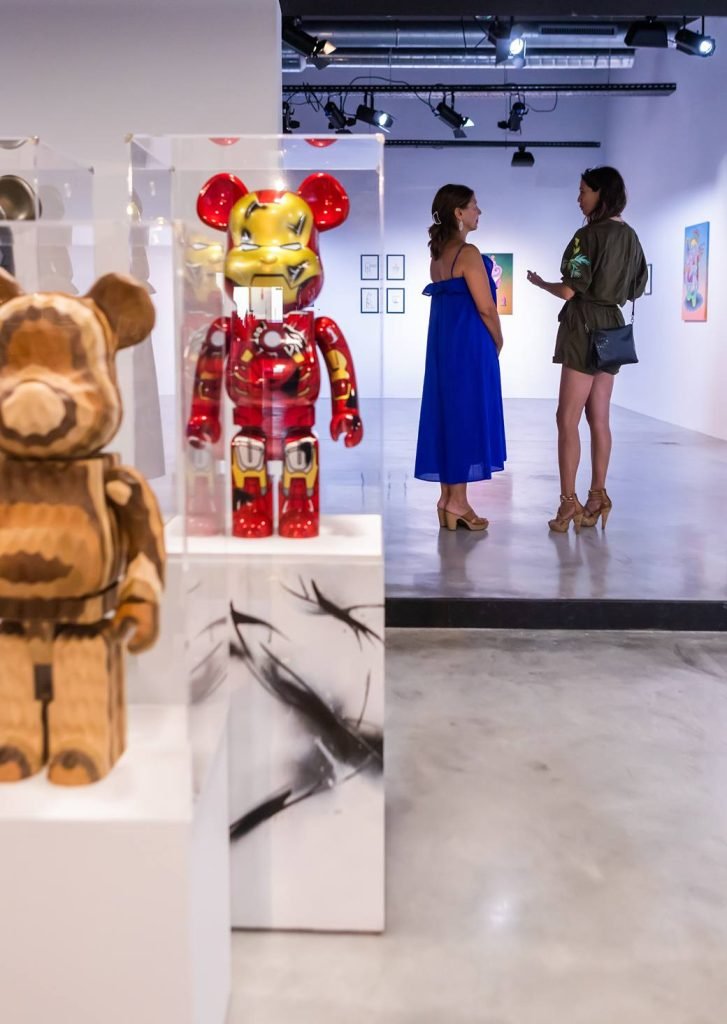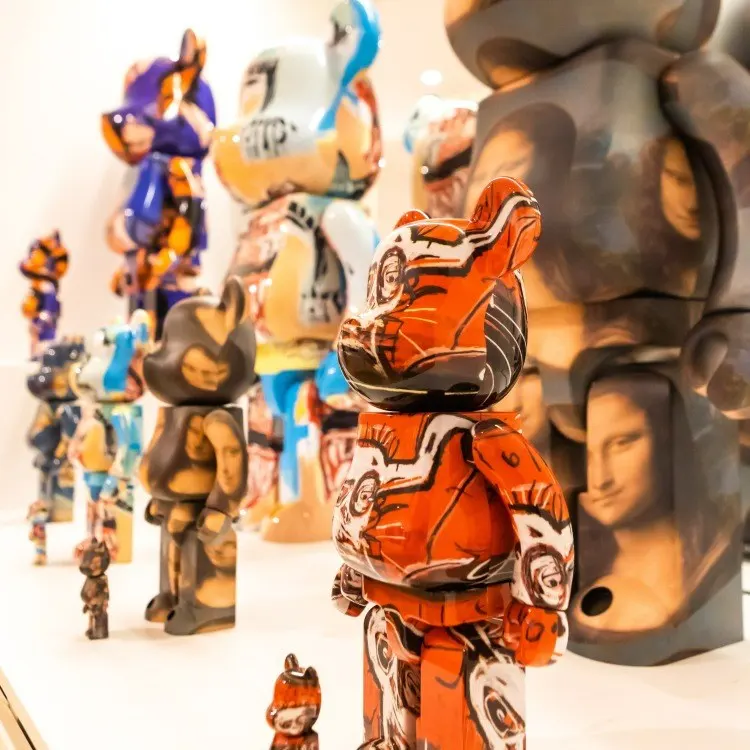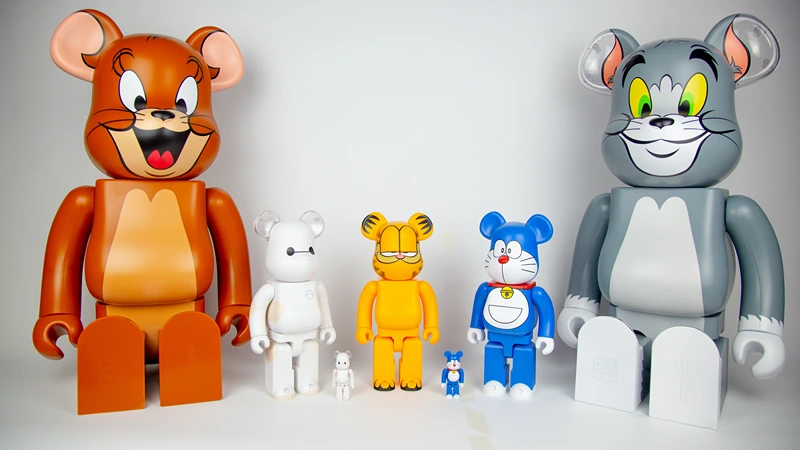If you’ve ever delved into the world of designer art toys, you might have come across a unique and highly collectible figure known as Bearbrick. Created by the Japanese company Medicom Toy, Bearbrick figures have gained a massive following worldwide. These charming little bears are aesthetically pleasing and fascinating in their design and construction. So today, we will explore the anatomy and structure of Bearbrick figures, unraveling the secrets behind their captivating appeal.

The Origins of Bearbrick Figures
Bearbrick figures saw the light of day in the “land of the rising sun” back on the 27th of May 2001. The main man behind Bearbrick figures and Medicom Toy is Tatsuhiko Akashi. Drawing inspiration from the popular Kubrick toy line, which in turn was influenced by LEGO figures, Bearbrick adopted a similar block-like shape. With its simple and versatile form, it became a canvas for various artists and brands to showcase their creativity.
The Basic Structure
Bearbrick is primarily composed of two main parts: the head and the body. The head features a distinct snout-like shape, two circular ears, and small round eyes, giving it an adorable and friendly appearance. The body consists of nine separate sections, each with its own unique design possibilities. Quite charming, agree?
The Bearbrick Ratio
Bearbrick is known for its standardized scale and ratio, denoted by numerical expressions such as 100%, 400%, or even 1000%. The number represents the size of the figure compared to a standard figure, which stands approximately 70 millimeters tall. The larger the ratio, the larger the Bearbrick. This consistency in size allows collectors to create visually appealing displays by mixing and matching figures of different ratios.

Materials and Construction
These bad boys are typically made from durable and high-quality materials. The most common construction involves the use of injection-molded plastic, which ensures precise detailing and consistent production. The parts are assembled using pegs and joints, allowing for articulation and customization. Some special editions may feature alternative materials, such as Karimoku wood, metal, or even plush fabric.
Artistic Expression and Collaboration
One of the most captivating aspects of Bearbrick figures is their ability to showcase an endless array of artistic styles and collaborations. Artists, designers, and brands from various fields have embraced Bearbrick as a canvas to express their unique visions. From famous artists like KAWS and Jean-Michel Basquiat to iconic brands like Nike and Royal Selangor, Bearbrick has become a medium for creative storytelling, often resulting in limited edition and highly sought-after releases.
Collector Culture and Community
The popularity of Bearbrick figures has fostered a vibrant collector culture and community worldwide. Enthusiasts avidly seek out rare and exclusive Bearbrick releases, attending conventions, exhibitions, and auctions dedicated to these captivating figures. The secondary market for Bearbrick figures has flourished, with resellers and collectors trading and selling figures at premium prices. This passionate community continuously expands the boundaries of Bearbrick’s influence.

To wrap this up, it’s safe to say that Bearbrick’s charm lies not only in its adorable design but also in its ability to transcend traditional toy boundaries and embrace artistic expression. Its standardized structure, coupled with the endless possibilities for collaboration, has turned Bearbrick into a global phenomenon. Whether you’re a collector, an artist, or simply an admirer of beautiful design, Bearbrick offers a captivating glimpse into the intersection of art and toys.
Images: Medicom Toy

Leave a Reply